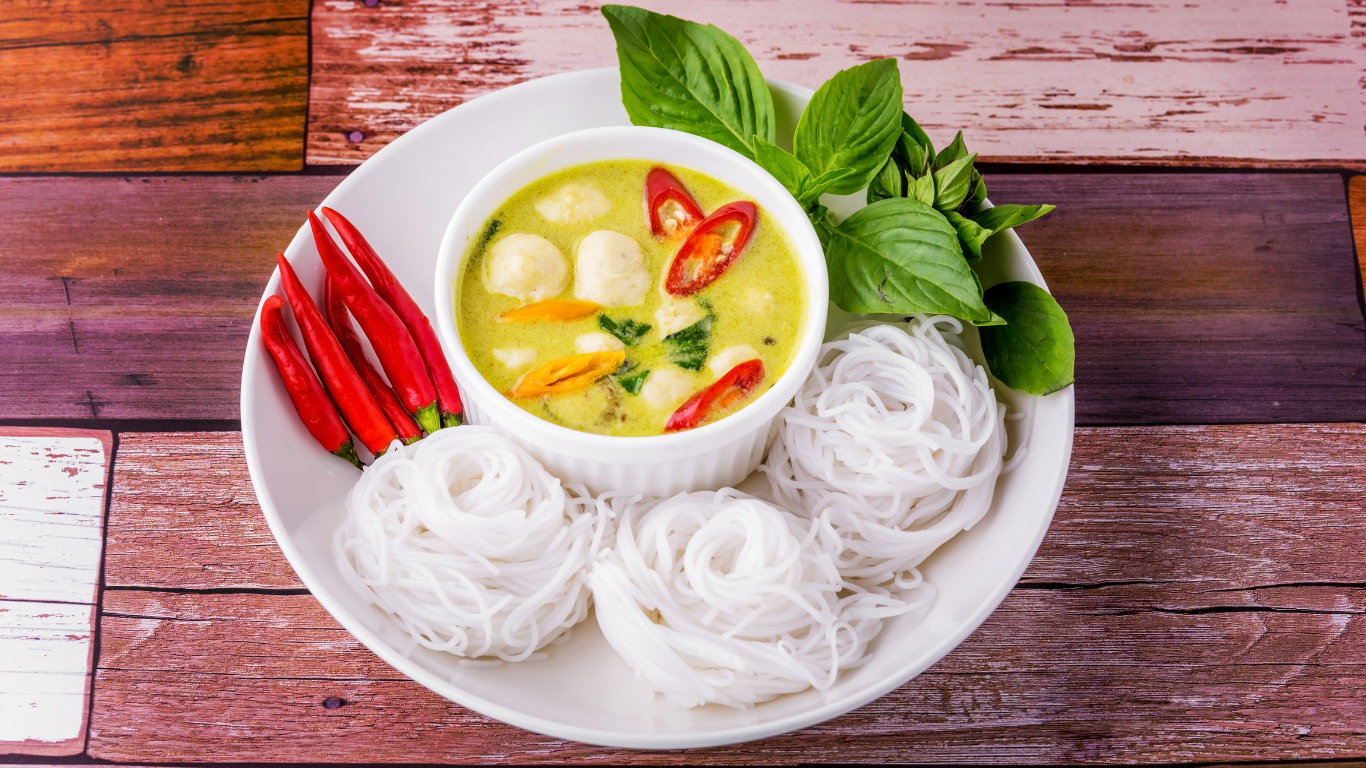Introduction.
In the vast world of culinary arts, few dishes encapsulate the essence of comfort and adventure quite like a warm bowl of soup. Among the myriad of soup varieties that grace tables worldwide, the Green Curry Mushroom Soup stands out as a vibrant, aromatic delight that promises to transport your taste buds to the heart of Southeast Asia. With its perfect blend of creamy coconut milk, fresh herbs, and earthy mushrooms, this soup not only satisfies the palate but also nourishes the soul.
As we embark on this culinary journey, we will delve into the origins of green curry, explore the versatility of mushrooms, and provide an in depth recipe for crafting this exquisite soup. Additionally, we will highlight the nutritional benefits of the ingredients, ensuring that you not only enjoy a delicious meal but also one that is good for you. We will conclude with case studies showcasing how different countries have embraced similar flavor profiles in their cuisines. Finally, five insightful questions and answers will help clarify any doubts and enhance your cooking experience.
The Essence of Green Curry.
Origins of Green Curry.
Green curry, known as “Gaeng Keow Wan” in Thai, has its roots in Thailand, where it has been a staple in Thai cuisine for centuries. The vibrant green color comes from fresh green chilies, which lend both heat and a rich flavor to the dish. Traditionally, green curry is made with a variety of proteins, vegetables, and aromatic herbs, but its versatility allows for endless variations, including vegetarian and vegan adaptations.
The Role of Mushrooms
Mushrooms have been celebrated in various cultures for their unique flavors and nutritional benefits. They are low in calories and provide essential nutrients, making them an ideal ingredient for a hearty soup. Common varieties such as shiitake, oyster, and button mushrooms add depth and umami to the dish, enhancing its overall flavor profile.
Nutritional Benefits of Green Curry Mushroom Soup.
Before diving into the recipe, it’s essential to understand the health benefits associated with the key ingredients in this soup:
- Coconut Milk: Rich in healthy fats, coconut milk provides a creamy texture while offering a source of energy and essential nutrients.
- Mushrooms: Packed with vitamins D and B, as well as antioxidants, mushrooms contribute to overall health and immune function.
- Green Chilies: These provide not only a kick of flavor but also boost metabolism and aid digestion.
- Herbs: Fresh herbs like cilantro and basil are rich in vitamins and antioxidants, promoting overall health and well being.
- Vegetables: Adding a variety of vegetables increases the fiber content, aiding in digestion and providing essential vitamins and minerals.
Green Curry Mushroom Soup Recipe.
Now that we appreciate the rich heritage and health benefits of our ingredients, it’s time to prepare this delightful soup. The following recipe serves as a guide to creating your own Green Curry Mushroom Soup, bursting with flavors and aromas that will tantalize your senses.
Ingredients.
For the Soup Base:
- 1 tablespoon coconut oil
- 1 onion, finely chopped
- 3 cloves garlic, minced
- 1 tablespoon fresh ginger, grated
- 2 tablespoons green curry paste (adjust based on heat preference)
- 4 cups vegetable broth
- 1 can (400 ml) coconut milk
- 1 tablespoon soy sauce or tamari (for gluten free option)
- 1 tablespoon lime juice
- Salt to taste
For the Mushrooms and Vegetables:
- 2 cups mixed mushrooms (shiitake, oyster, and button), sliced
- 1 red bell pepper, sliced
- 1 cup baby spinach
- 1 cup broccoli florets
- Fresh cilantro and basil, for garnish
Instructions
- Sauté Aromatics: In a large pot, heat coconut oil over medium heat. Add the chopped onion and sauté until translucent. Stir in the minced garlic and grated ginger, cooking for an additional minute until fragrant.
- Add Green Curry Paste: Add the green curry paste to the pot, stirring continuously for about 2 minutes to toast the spices and release their flavors.
- Pour in Broth and Coconut Milk: Gradually pour in the vegetable broth and coconut milk, stirring to combine. Bring the mixture to a gentle simmer.
- Incorporate Mushrooms and Vegetables: Add the sliced mushrooms, red bell pepper, and broccoli florets to the pot. Allow the soup to simmer for about 10-15 minutes, or until the vegetables are tender.
- Finish with Spinach and Seasoning: Stir in the baby spinach, soy sauce, lime juice, and salt to taste. Cook for an additional 2-3 minutes, allowing the spinach to wilt.
- Serve: Ladle the soup into bowls and garnish with fresh cilantro and basil. Serve hot, and enjoy your flavorful journey!
Embracing Flavors Globally.
1. Thailand: The Heart of Green Curry.
Thailand is renowned for its culinary traditions, and green curry exemplifies the country’s unique approach to flavor. Street vendors and high end restaurants alike serve this dish, showcasing the diverse interpretations that exist within Thai cuisine. The use of fresh herbs, spices, and local ingredients has made green curry a beloved staple, both locally and internationally. Thai chefs often experiment with variations, incorporating local produce and proteins to create unique regional dishes.
2. India: A Love for Spices and Curries
India is a country where curry is a way of life. While the flavors may differ, the essence remains the same: combining spices to create rich, aromatic dishes. Indian cuisines frequently include mushrooms in various curries, showcasing their versatility. Dishes like “Mushroom Masala” highlight the Indian affinity for mushrooms, often cooked in rich gravies with spices that parallel the flavors found in green curry.
3. Japan: Miso and Umami
In Japan, the concept of umami is prevalent, and mushrooms are often used to enhance this flavor profile. Japanese soups, such as miso soup, frequently incorporate mushrooms and other vegetables, creating a comforting and nourishing meal. The Japanese culinary tradition emphasizes seasonal ingredients, leading to innovative variations of traditional dishes that echo the principles of green curry.
4. Vietnam: Fresh Herbs and Aromatics.
Vietnamese cuisine shares similarities with Thai cuisine in terms of flavor profiles. The use of fresh herbs, spices, and aromatic ingredients is a hallmark of both cuisines. Soups like “Pho” and “Canh” often incorporate mushrooms and other vegetables, reflecting the emphasis on fresh, vibrant flavors. Vietnamese chefs frequently experiment with green curry-inspired dishes, creating fusion recipes that celebrate both culinary traditions.
5. Indonesia: A Rich Tapestry of Flavors
Indonesian cuisine features a variety of curries and soups, often enriched with coconut milk, spices, and fresh vegetables. Dishes like “Soto” and “Rendang” highlight the country’s diverse culinary heritage, where mushrooms often play a supporting role. The fusion of flavors in Indonesian cooking aligns closely with the principles of green curry, showcasing the global appeal of this culinary tradition.
Conclusion
Green Curry Mushroom Soup is not just a dish; it is a celebration of flavors, cultures, and traditions that connect people around the world. By embracing the vibrant ingredients and culinary techniques that define this soup, we can take a journey through the rich tapestry of global cuisine. The versatility of green curry allows for endless adaptations, making it a beloved dish for vegetarians and meat lovers alike.
As we continue to explore and innovate in the kitchen, let us remember the origins of our ingredients and the cultures that have shaped our culinary experiences. Whether you are enjoying this soup on a chilly evening or sharing it with loved ones, may it bring warmth, comfort, and a taste of adventure to your table.
Questions and Answers.
- Can I use different types of mushrooms in this recipe?
- Yes! Feel free to experiment with your favorite mushroom varieties, such as portobello, cremini, or even wild mushrooms for added flavor and texture.
- Is it possible to make this soup gluten free?
- Absolutely! Simply use gluten free soy sauce or tamari in place of regular soy sauce, and ensure all other ingredients are gluten free.
- Can I make this soup ahead of time?
- Yes, this soup can be made ahead and stored in the refrigerator for up to three days. Reheat gently on the stovetop, adding a splash of broth or coconut milk if it thickens.
- What can I serve with Green Curry Mushroom Soup?
- This soup pairs wonderfully with steamed jasmine or basmati rice, crusty bread, or a fresh salad for a complete meal.
- Can I add protein to this soup?
- Certainly! You can add tofu, tempeh, or even cooked chicken or shrimp to make the soup heartier and more filling. Just ensure that any added protein is cooked through before serving.

